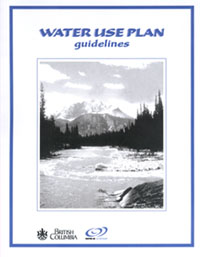Water Use Plan Helps Summerland Resolve Water Use Conflict
 The dry hot conditions during the summer of 2003 caused some major water use conflicts to occur throughout the Province of British Columbia.
The dry hot conditions during the summer of 2003 caused some major water use conflicts to occur throughout the Province of British Columbia.
The District of Summerland, in the southern area of the Okanagan Valley, is located in a region that was especially vulnerable. As is the case with many of the water purveyors in the Okanagan Valley, the Summerland water supply comes from reservoirs located in the mountains above the municipality. The advantage of upland storage is that it allows water to be gravity fed to users, eliminating or reducing the need for pumping. However it also means that the water supply is limited to the snow pack and what can be kept in storage.
In 2003 the Department of Fisheries and Oceans was concerned about the low flows of water in Trout Creek, the major tributary from the Summerland watershed that flows into Okanagan Lake. In an effort to increase flows for fish in Trout Creek DFO ordered Summerland to release additional water from storage. To accomplish this and ensure there would be enough water for the community, farmers were asked to reduce their water use.
Summerland did not want to have the experience of 2003 repeated in the future. Farmers wanted to have some assurance that their water supply was secure and that future reduction in flows would be based on a plan that was agreed upon by the community and fisheries. The solution to the problem was to develop a water use plan using a process that was established by the Ministry of Environment and used extensively by BC Hydro for many of their reservoirs in British Columbia.
Link to the Water Use Planning process
The Summerland Water Use Plan developed a set of rule curves for how the reservoirs would be managed (the amount of water that would be released) depending on the level of water in the reservoir at various times during the summer months.
The following powerpoint presentation link provides details on how the Summerland Water Use Plan was developed and the rule curves that were established. (Click on each slide to activate animated text)

